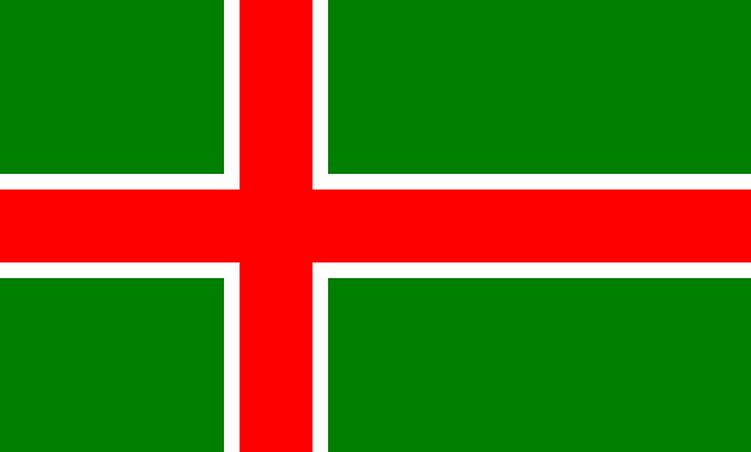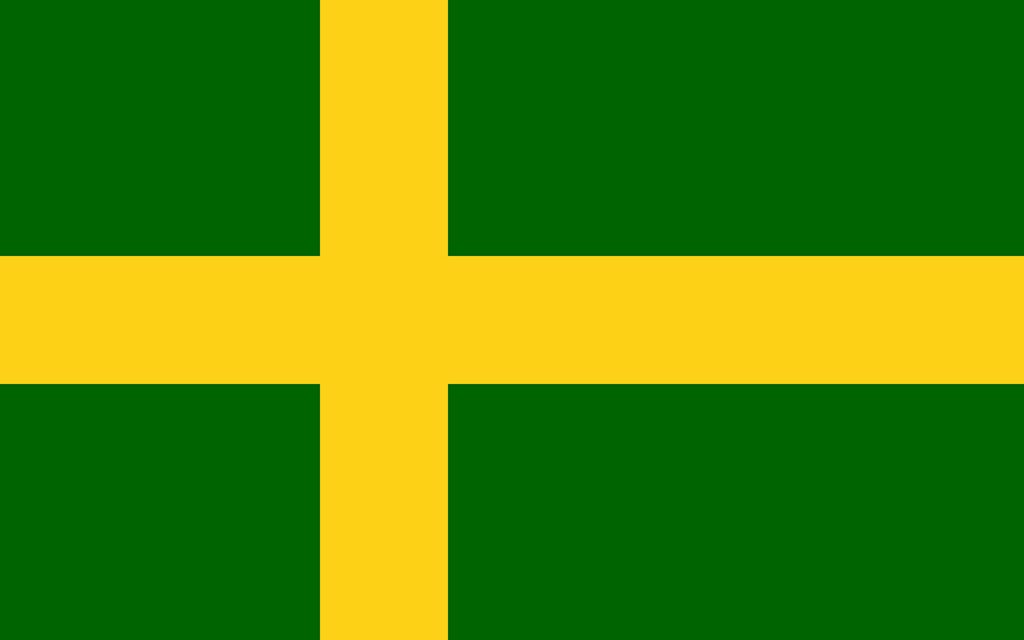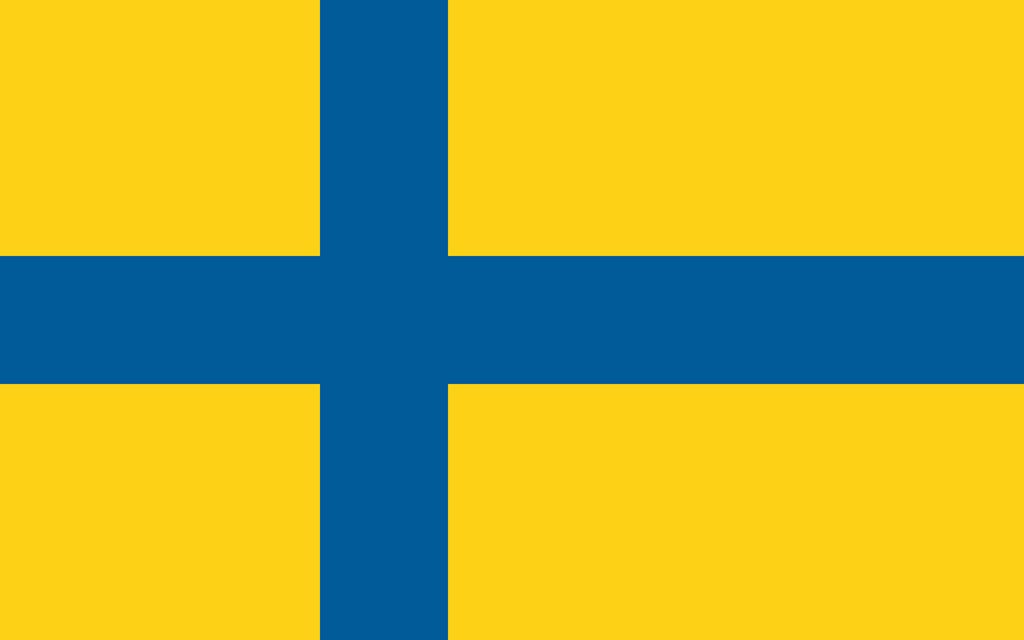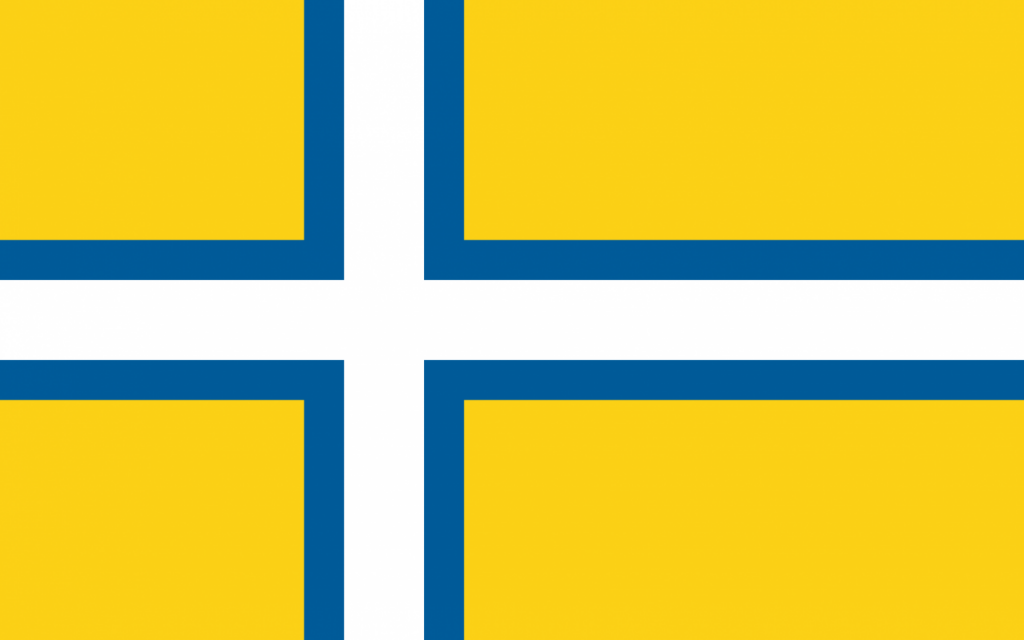Swedish Flags
The exact age of the Swedish Flag is not known, but the oldest recorded pictures of a blue cloth with a yellow cross date from the 16th century. As decreed in a royal warrant of 1569, the yellow cross was always to be carried on Swedish battle standards and banners; the Swedish Royal Coat of Arms was blue divided in quarters by a cross of gold. The design of the flag was probably inspired by the Danish flag. Not until the 1620s, during the reign of Gustav II Adolf, do we find any reliable evidence of the blue flag with a yellow cross being displayed by Swedish vessels. According to the oldest existing flag warrant, from 1663, a triple-tailed flag was to be used except by merchant ships, whose flag was square-cut. Nowadays the use of the triple-tailed pennon is reserved for the Royal Family and the Armed Forces. The Royal Family may also charge its flags with the Coat of Arms in the centre of the cross.
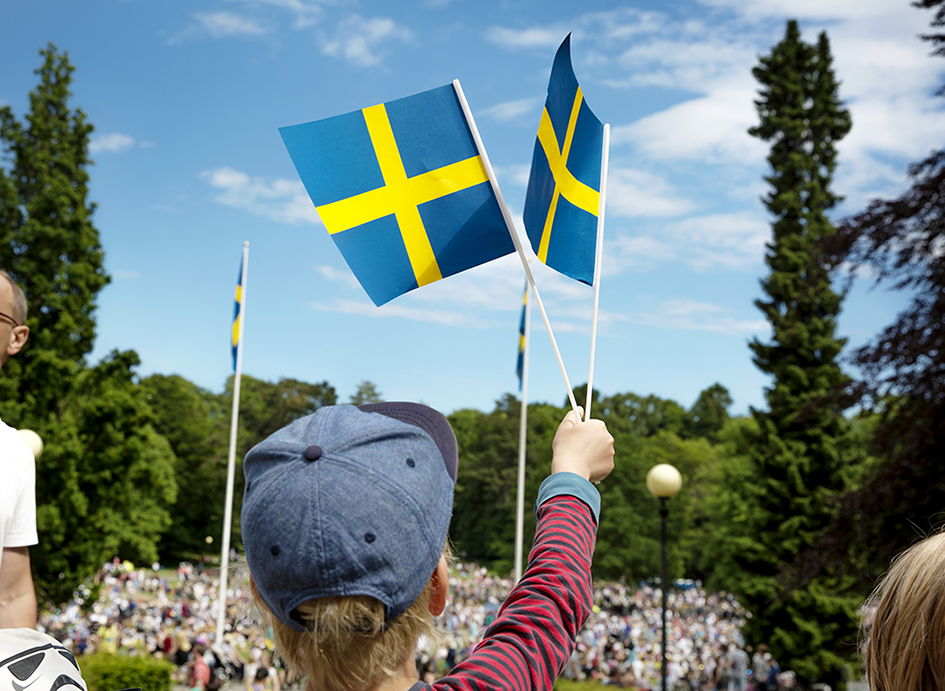
Since 1916, June 6 has been celebrated as the Swedish Flag Day. This finally also became Sweden’s National Day in 1983. The reasons for the choice of date are twofold: the election of Gustav Vasa as Sweden’s king on June 6, 1523 laid the foun-dation of Sweden as a separate state; and on the same date in 1809 Sweden adopted a new constitution which included the establishment of civil rights and liberties.
The colours and design of the flag are laid down in the Flag Act of 1982. The flag is normally hoisted at 08.00 hrs from March 1 to October 1, otherwise at 09.00 hrs. It is lowered at sunset, but no later than 21.00 hrs. There are some 15 official flag days, including the special celebrations of the Royal Family, May Day, Election Day, United Nations Day (October 24) and Nobel Day (December 10). The flag may also be flown on special local or private family occasions.

The Swedes sniff at public manifestations of patriotism, conveniently overlooking the fact that the blue and yellow Swedish flag is everywhere to be seen – at the top of garden flagpoles, on postcards, on birthday cakes, on the branches of Christmas trees, on the faces of football fans. Its colours are echoed on candles and napkins, on bottle labels and biscuit tins, even on Swedish company logos such as Ikea.
The flag’s colours also bring back memories of childhood summers when the sky was bluer and the sun more golden than today. For Swedes the national flag is primarily an eye-pleasing backdrop. Rather than rallying people to war, it invites them to a picnic in the meadow.
Several Swedish counties have their own regional flags. Many resemble the national flag in all but colours. Skåne in the south used to belong to Denmark, and the flag is a compromise – the Swedish yellow cross placed against the red background of the Danish flag. The three-coloured flag of Småland resembles that of Iceland, except that the cold blue background has been replaced by a warmer green. The island of Öland has opted to use green where the Swedish national flag is blue. The colours of Östergotland’s flag are the inverse of the national flag – a blue cross on a yellow background. Västergötland has borrowed the Östergötland flag but added a white cross inside the blue cross. The remaining counties have forgone the cross altogether in favour of lions, moose, deer, bulls, sheep, eagles and fish. If you go all the way to Norrbotten (part of Lapland), you might be surprised to see flags featuring a reindeer fleeing from what appears to be a caveman wielding a big club. Such is life up there in the midnight sun.

Text credits: Swedish Institute, Oval Projects and Peter Berlin
First published June 5, 2020


